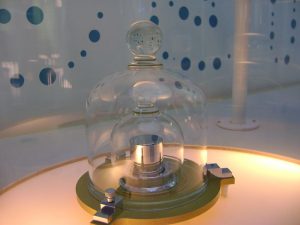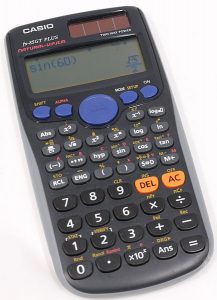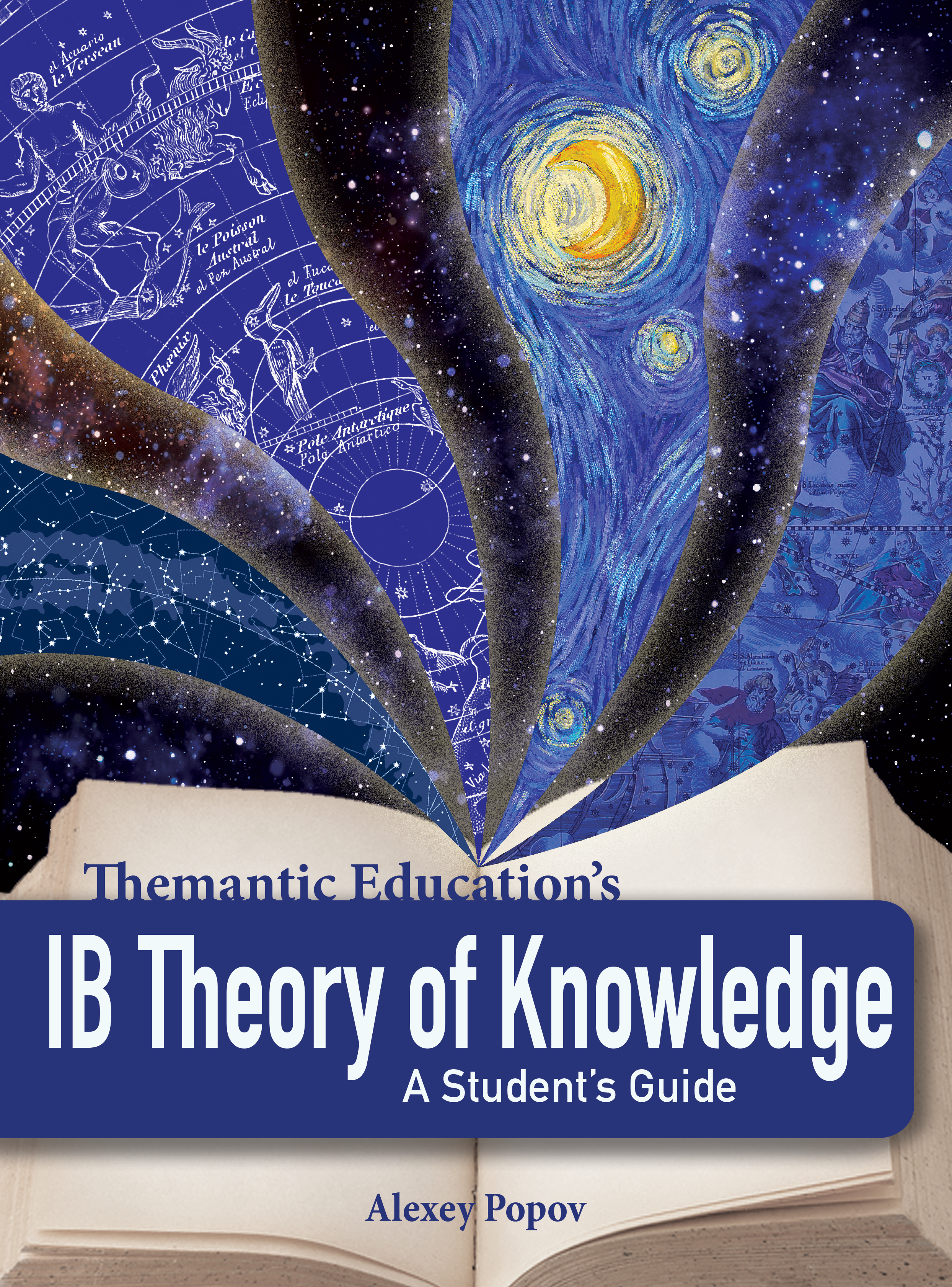In this post you will find the first one of our TOK exhibition samples: the written commentary itself as well as a video that gives a step-by-step explanation of the full creation process.
TOK exhibition Sample 1 uses the following approach:
- Choose the IA prompt
- Think about one aspect in relation to it
- Find an object supporting it
- Link the object to the prompt
- Depending on how it was linked, choose where to look for the other two objects
The IA prompt that was selected is “Bias is inevitable in the production of knowledge”. The three objects are:
- the Big K (the prototype kilogram)
- Casio FX-83GT PLUS calculator
- Brendan Cole’s article “‘Little Red Riding Hood’ Banned from School over Sexism Concerns” (2019)
Why we are doing this
We at Themantic Education think that the best way to support students in making their TOK exhibition is to demonstrate some specific examples – not only the final product, but the full thinking process that went into it. This way students will understand not only where they need to go, but also how to get there.
For this reason we have created several sample TOK exhibitions each using a slightly different approach to selecting the objects.
Each of our sample exhibitions includes the fully written TOK exhibition commentary and a YouTube video that gives a step-by-step explanation of how the exhibition was created. Together they will help your students understand the process thoroughly.
Don’t forget to check out our other TOK exhibition samples! See Thematic Education’s IB TOK playlist on YouTube
(And buy our textbook, it’s awesome and different from all other textbooks)
EXPLAINER VIDEO:
The process of creation
WRITTEN COMMENTARY:
Is bias inevitable in the production of knowledge?
I will define bias as a systematic deviation. “Systematic” is what makes bias different from an error or a mistake. If we measure something 100 times, we will get slightly different readings each time – this is random error. However, if all our measurements are systematically slanted in one direction – this is bias.
If we want to show that bias is inevitable in the production of knowledge, we should find examples of knowledge that, by common sense, is most definitely not biased. Then we should try to find elements of bias in this believed-to-be-unbiased knowledge. If we do succeed in finding such elements, we must agree that bias is inevitable.
 Object 1: the Big K |
This is the Big K, the prototype kilogram. It is a block of platinum-iridium alloy that has been housed at the International Bureau of Weights and Measures in France since 1889. Back then scientists agreed to define a kilogram as the mass equivalent to the mass of this object. All 1 kg weights existing in the world today are copies of copies of copies of copies of this boulder. Scientists have taken great efforts to ensure that the mass of this prototype kilogram does not change. However, despite all precautions, it changed. Since 1889 it has become approximately 50 micrograms lighter – that is the weight of an eyelash (Resnick, 2019).
This object links to the idea of bias because, since the prototype has become lighter, we are systematically overestimating how much a kilogram is. It is a case of systematic deviation (which, by my definition, is bias). The object also illustrates the idea of inevitability of bias: the Big K has lost some mass due to natural fluctuations of matter, physical laws that are beyond human control.
This object was included in the exhibition because it demonstrates the idea that even the most precise scientific measurements are done against a standard, but standards themselves may change, and when they do, our new measurements become biased. I tried to find an example of something that is believed to be unbiased, and then I found an element of bias in it.
 Object 2: Casio FX-83GT PLUS calculator |
What are some other examples of knowledge that are typically believed to be free of bias? Mathematical knowledge has this kind of aura around it, especially when it is aided by technology. When we use a calculator, there is no reason to believe that the result of our calculation is biased. So it may seem.
But it is not true. The second object of my exhibition is Casio FX-83GT PLUS calculator. One curious fact about it is that this calculator appears to be biased against this particular mathematical expression:![]() .The response you get is
.The response you get is ![]() . But pi is an irrational number, which means by definition that it cannot be expressed as a fraction. That’s obviously incorrect. Curiously, other similar examples do not work this way. It is only
. But pi is an irrational number, which means by definition that it cannot be expressed as a fraction. That’s obviously incorrect. Curiously, other similar examples do not work this way. It is only ![]() that produces an incorrect answer, and only on this calculator model (Parker, 2020).
that produces an incorrect answer, and only on this calculator model (Parker, 2020).
This object links to the concept of bias because it is a case of systematic deviation from the truth. It is only this particular model, and this particular problem, that produces a biased result. This object also exemplifies the idea of inevitability of bias. The reason for this error is that pi is infinite, but the calculator’s memory is not. Therefore there is some truncation involved at some point somewhere. It is inevitable because technology cannot have infinite power.
This object has been included in the exhibition because it shows that even in something as certain as mathematics there could be systematic mistakes (biases). Unless we create technology that is infinitely powerful, we cannot recreate the infinite accuracy that is intrinsic in mathematics. Once again, I found something that is widely believed to be unbiased, and then I found an element of bias in it.
 Object 3: Brendan Cole’s article “‘Little Red Riding Hood’ Banned from School over Sexism Concerns” (2019) |
For my third object I am using Brendan Cole’s online article “‘Little Red Riding Hood’ Banned from School over Sexism Concerns” (2019) – this is a screenshot of the article.
The context behind this is that creating this exhibition has made me think about my own biases. I might have absorbed some cultural biases at an early age.
As described in the article, a school in Spain has withdrawn from its library 200 classic children’s books including Sleeping Beauty and Little Red Riding Hood, after analyzing them and concluding that they were “toxic” in how they depicted sexist stereotypes. For example, in Sleeping Beauty the man who kisses a sleeping woman without her consent is presented as a hero. No wonder some parents have made the choice to not expose their children to tales like that (Cole, 2019).
This object exemplifies the idea of bias because it shows how gender bias manifests in units of culture. It also conveys the idea of inevitability because we absorb these units of culture at a very young age when our critical thinking abilities are limited, so the biases may gradually become part of our personality on a deep level without us being aware of it.
This object has been included in the exhibition because it highlights another reason why bias is inevitable. While my first object (the Big K) shows that bias may be created by fluctuations of physical matter that are beyond our control and my second object shows that bias may be a result of ever imperfect technology, the third object highlights the idea that bias may be a result of cultural transmission at a young age. All three factors are very difficult or even impossible to avoid, which does indeed make bias inevitable.
Word count: 936 words
References:
Cole, B. (2019, November 4). ‘Little Red Riding Hood’ Banned From School Over Sexism Concerns. Newsweek. Retrieved from: https://www.newsweek.com/little-red-riding-hood-banned-school-over-sexism-concerns-1393134
Parker, M. [Stand-Up Maths]. (2020, July 17). Why do calculators get this wrong? (We don’t know!) [Video]. YouTube. https://www.youtube.com/watch?v=7LKy3lrkTRA
Resnick, B. (2019, May 20). The new kilogram just debuted. It’s a massive achievement. Vox. Retrieved from: https://www.vox.com/science-and-health/2019/5/17/18627757/kilogram-redefined-world-metrology-day-explained

Alexey Popov is a teacher of IB Psychology and Theory of Knowledge. He is an IB author, examiner and workshop leader. He also authored Oxford IB Psychology books. He currently lives in Hong Kong.

